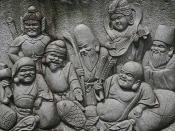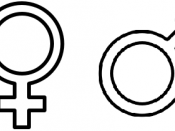The authors set forth a three fold agenda in their consideration of women in the
ministry. First, they want to examine the historical context of women in the church.
They answer the question have women been an integral part of the ministering
community since the beginning of the church. They delve deep into the history of the
church even researching the roles of women in Judaism.
Next, they examine the biblical models for women in ministry. Clearly, Grentz &
Kjesbo feel that women are to take an equal role with men in ministry. Further, they
spend an exhaustive amount of time developing the creation account in order to
undermine the complementarian considerations for women in ministry.
Finally they look at the theology behind women pursuing ordination. How do we
develop the principles we believe are set forth in scripture and make them the working
habits of the church? How do we develop doctrine for women and authority?
2.)
The assumptions of complementarians are that God is male, women were placed
in subordination to men by God, and finally God developed and ecclesiastical hierarchy
in which men only fill leadership offices (pg. 173). The assumption that God is male or
more male is best disputed on page 145. Old Testament scholar Phyllis Trible wrote that
there seemed to be a consensus among Old Testament scholars that God was neither male
or female. This was one of the key things that made Yahweh different from his near east
counterparts. Unlike his peers, he did not sit with a female to fertilize earth. He gave
earth its own ability to reproduce. God was not gendered.
Additionally, on page 146-7 the male images of God were more images to explain
relationships with the God of the Bible. These images were not used to...



Women in the Ministry
Who is 'they'? And what is the intro talking about? It isn't very clear.
1 out of 1 people found this comment useful.